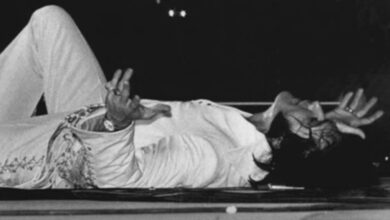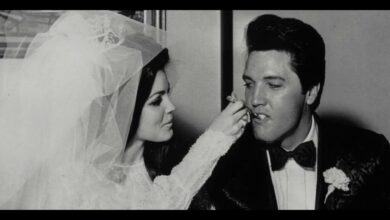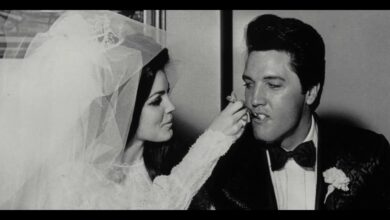A Beautiful Song By Young Elvis. His Every Performance Brims With Passion And Intensity
“When My Blue Moon Turns to Gold Again” originated as a heartfelt composition by Wiley Walker and Gene Sullivan. Elvis Presley immortalized this tune with his rendition on September 2, 1956, at Radio Recorders in Hollywood, California. Accompanying Elvis were Scotty Moore on guitar, Bill Black on bass, D.J. Fontana on drums, and Gordon Stoker on piano, with the harmonious background vocals provided by The Jordanaires.
Originally a country hit in the 1940s, Elvis breathed new life into the song with his rockabilly interpretation. Its lyrics evoke feelings of longing for lost love and the anticipation of brighter days ahead. Elvis’ rendition masterfully captures this emotional dichotomy, resonating deeply with his audience.
The song became a staple in Elvis’ performances, including his memorable appearances on “The Ed Sullivan Show” in 1957, solidifying his status as a cultural phenomenon. It found a place on his second studio album, “Elvis,” released in October 1956, alongside other classics like “Rip It Up” and “Love Me.”
Elvis Presley, born on January 8, 1935, in Tupelo, Mississippi, earned the title of the “King of Rock and Roll” through his pioneering blend of rock, country, and blues. His impact transcended music, extending into film and live performances, captivating audiences worldwide.
Despite his passing on August 16, 1977, Elvis’ legacy endures, with his influence still felt in contemporary music. “When My Blue Moon Turns to Gold Again” remains a testament to his ability to infuse songs with his unique style, underscoring his lasting impact on the music industry and his immortal status as an icon.



